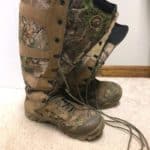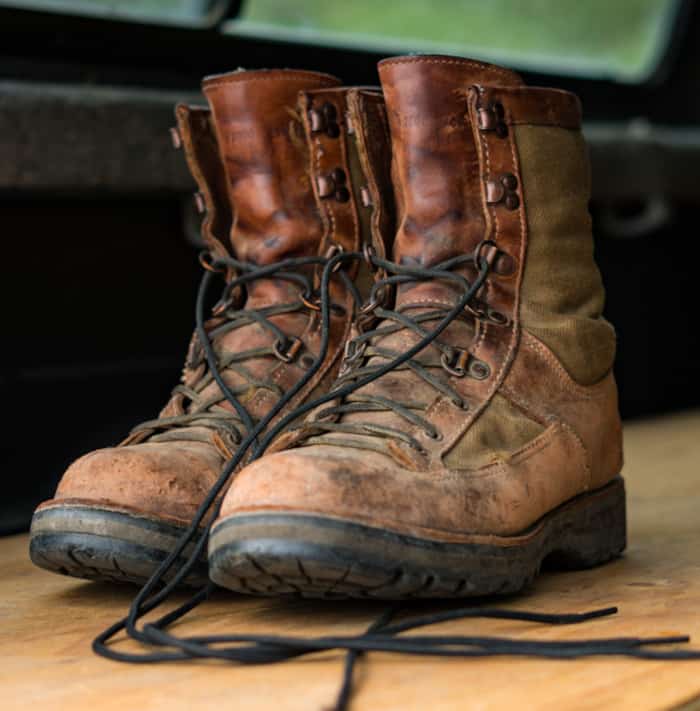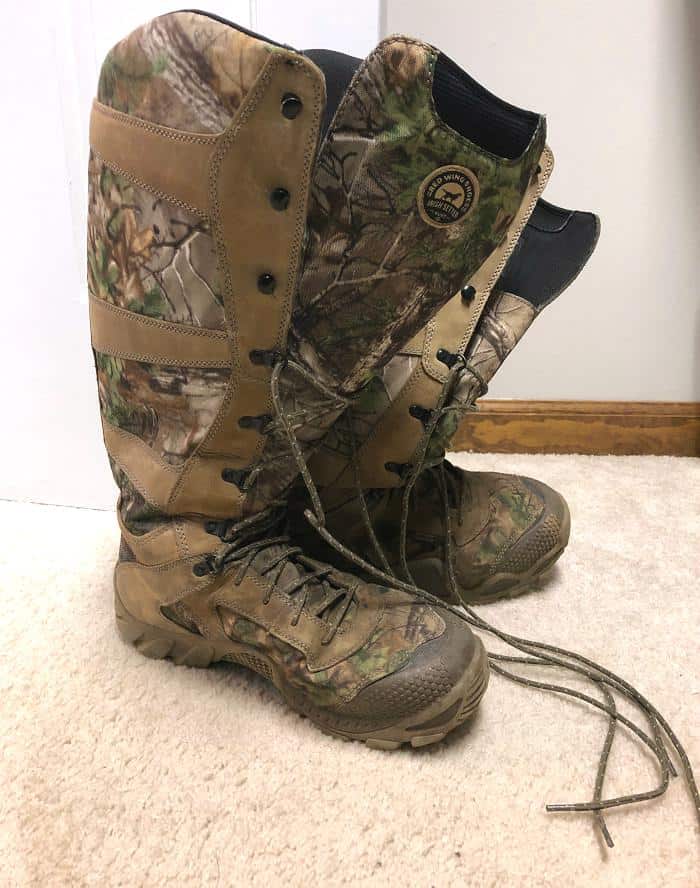For many years, there have been debates regarding the “perfect” pair of turkey hunting boots, both in-person and online. So, one of the first questions people ask is, “will my regular hunting boots work for Turkey hunting?”
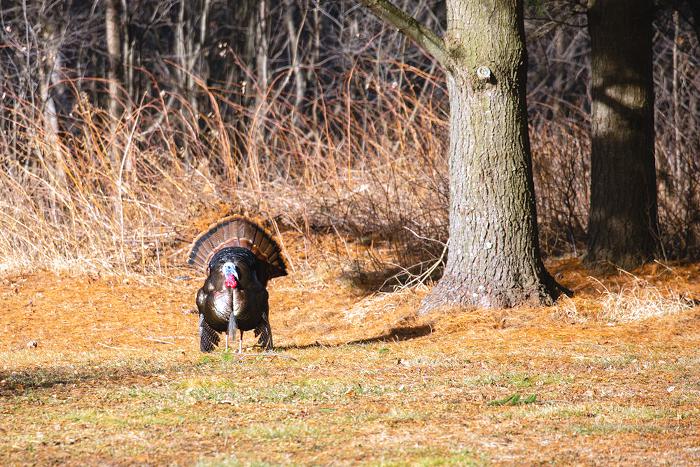
Well, they might work just fine, but then again, they may not. So the answer will really depend on a couple of factors like the boot design and level of insulation.
Here are two factors to take into consideration when deciding if your existing hunting boots will work for Turkey hunting:
- Spring Hunting Temperatures
- Venomous Snakes
- Boot Height
Let’s take a more in-depth look at these factors and how they could impact your decision about buying new Turkey hunting boots.
Spring Hunting Temperatures
Most states schedule the Turkey hunting season to coincide with Turkey mating season. Typically speaking, this usually occurs during the spring when temperatures rise.
Depending on the geography you hunt, spring turkey hunting temperatures could range anywhere from a chilly 45-degree morning that warms up to 75 or 80 degrees by mid-afternoon. Obviously, those temperatures could be very different in your state,
Hunting boots are available with varying levels of insulation built into the boots. Boot insulation levels range from completely uninsulated all the way up to 2000 grams of insulation. Most hunters purchase hunting boots that are made for colder weather hunting.
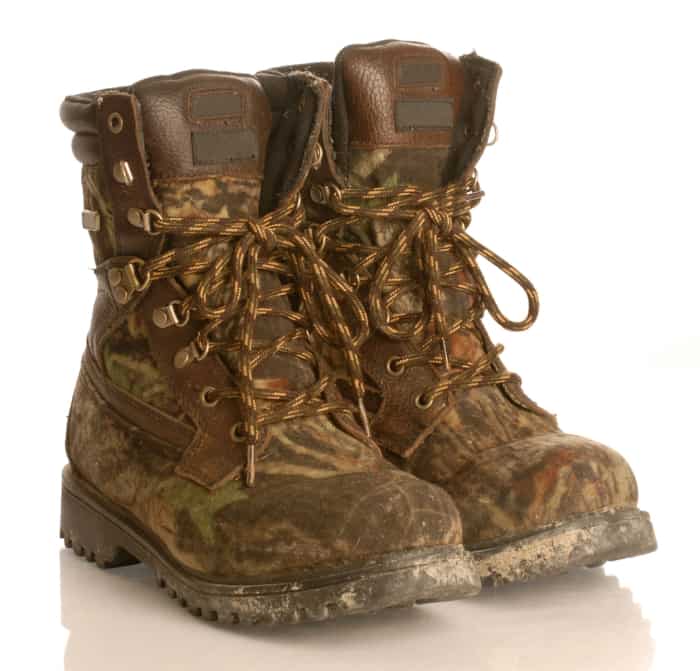
Colder weather hunting boots may be over-insulated for use in the milder spring temperatures. I recall a boot situation that occurred when I drove down to South Carolina for a Turkey hunt. When I started getting dressed for the first morning hunt of the trip, I realized that I mistakenly packed a pair of my colder weather hunting boots that featured 800 grams of insulation.
Given the warm springtime weather in South Carolina, these were not the ideal boots for warmer weather hunting. Even with the thinnest socks, I could find, my feet were sweating so bad that blisters started to form from the moisture in the boot. So while I enjoyed the trip, the boot issue did make it less enjoyable, and I’m hoping I don’t ever make that mistake again.
Venomous Snakes
The other factor to consider is the possibility of encountering a venomous snake in the woods during the warming spring weather. Springtime in most areas means the likelihood that snakes are just coming out after the winter.
While traditional hunting boots may offer the wearer some protection from snakebite, they may not be the same level of protection provided by actual snake-proof boots.
Case in point: A good friend of mine who bow hunts happened to step on a large water moccasin (also called a Cottonmouth) while walking out of the woods during the September bowhunting season. He was wearing traditional hunting boots when the snake whipped around and struck the toe area of his boot. While the fangs didn’t penetrate into his foot, they did penetrate deep enough into the boot to inject venom on his sock. Guess who was at the local sporting goods store buying snake boots the next day.
Here are a few things worth noting about this encounter that may have also played a role:
- The snake was an abnormally large Cottonmouth, so its fangs were probably longer than the fang length seen on “most” cottonmouth snakes.
- Due to the warmer weather, he was wearing uninsulated boots. It’s entirely possible that the snake’s fangs were able to penetrate into the inner part of the boot due to the thinner boot wall due to the lack of insulation. However, it’s also possible that the snake would not have been able to penetrate a boot with 400 grams or 600 grams of boot insulation.
To be fair, encountering a venomous snake during Turkey season may somewhat depend on where (geographically) you are hunting. For example, a Florida Turkey hunter has a much higher chance of running across a venomous snake compared to a Turkey hunter in Michigan due to the substantial differences in the springtime temperatures.
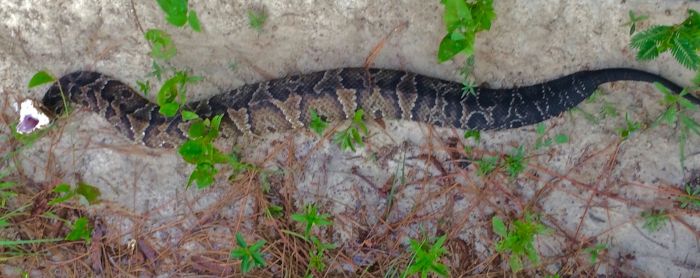
To be honest, the potential health risks of a venomous snake bite don’t concern me as much as the potential financial impact of a bite. Antivenin and hospital treatment are extremely expensive, even with good health insurance.
One of our Hunter-Gear.com staff personally knows a venomous snake bite victim and has a great true story example of the costs of snakebite treatment.
Boot Height
This factor is somewhat tied to the venomous snake concern listed above but is worth mentioning. Depending on the overall height of your existing hunting boots, they may not be the ideal choice for hunting in areas warm enough for snake activity.
As an example, let’s say that your existing hunting boots are 9-inch models, meaning that they are 9 inches tall from the ground up. For cold weather or winter weather hunting, the 9-inch height may be fine for your needs.
However, in venomous snake country, 9 inches of boot coverage may not be sufficient coverage to ward off a potentially venomous snake bite, even with traditional hunting boots. Especially considering that most dedicated snake boots on the market are a minimum of 16 inches tall.
While these three points are not a “requirement” for a good pair of turkey hunting boots, I would definitely take them into consideration when buying boots. Although I don’t get to turkey hunt much anymore, my pair of turkey hunting boots are a pair of Irish Setter 18″ non-insulated snake boots.
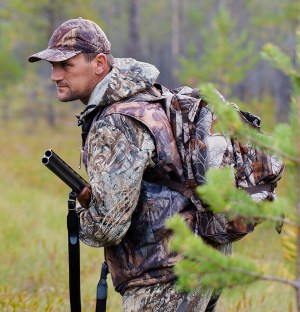
Born and raised in the North Carolina foothills, Andy was introduced to the outdoors at a very young age. Like most beginning hunters, he started out hunting small game like rabbits and squirrels, then graduated to larger species like Whitetail Deer. Although he’s an avid deer and turkey hunter, he still enjoys hunting small game as well. Andy has worked in the hunting and fishing industry for nearly 25 years.

